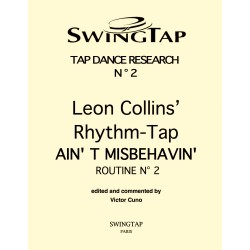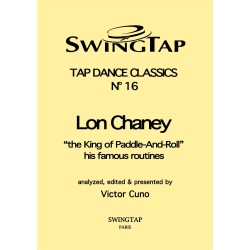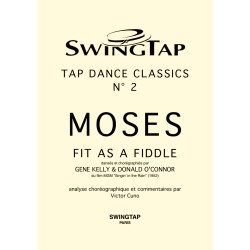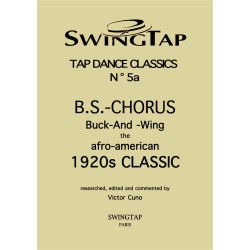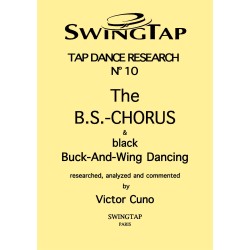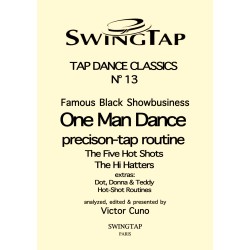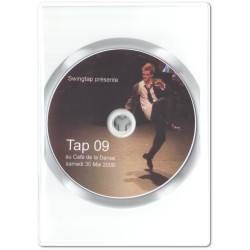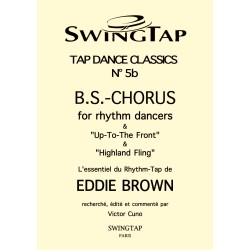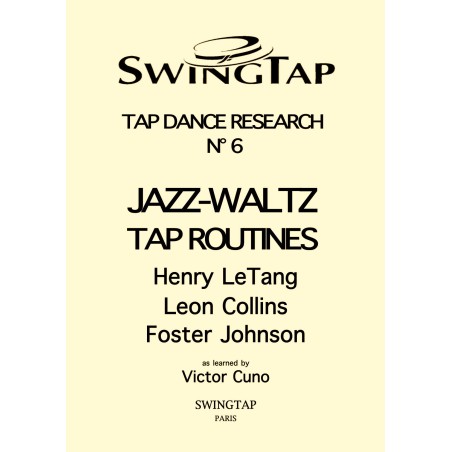

Tap Dance Research N° 6 - style: afro-american rhythm-tap. Trois numéros très élegants et dansants avec un swing irresistible. Analyse détaillée des Pas (Victor Cuno). Editio ANGLAISE disponible en TELECHARGEMENT PDF
- Exclusivité web !


Victor Cuno presents:
Jazz-Waltz Tap Routines
by
Henry LeTang
Leon Collins
Foster Johnson
comments p. 4
Henry LeTang “Lover” p. 5
Routine N° 15 originally intended for the GIRLS
“Lover” played in 3/4 time - rather slow & jazzy
music : Richard Rodgers
2-Chorus Routine (each Step 16 bars)
Leon Collins “Little Niles” p. 14
music: Randy Weston
aka “Waltz For Diana”
3-Chorus Routine (each Step 16 bars) with Intro & Tag
Foster Johnson p. 28
“Jazz-Waltz Medley”
as learned from Linda Sohl-Donnell
1st Chorus: "Falling In Love With Love" (music: Richard Rodgers)
2nd Chorus "Someday My Prince Will Come" (music: Frank Churchill)
Jazz-Waltz Tap Routines
The old Waltzclog adapted to a swinging jazz-tempo: a rare gem. Performed and taught by three famous tap-dancers, these routines are the only ones I witnessed in this particular style of tap. Henry LeTang, Leon Collins and Foster Johnson updated an old and originally all white tap-tradition with their afro-american heritage, combining it with ballet influences. Although the Waltzclog-Routines were already performed to standard 32-bar melodies as early as 1920, the formula retained here is the original one with an 64-bar chorus divided onto 4 16-bar units. The prevailing choreographical set-up of the old days for each of these 4 Steps was organized in 4-bar units: 2 bars of the Waltzlog Time-Step, 2 bars of an individual combination - almost always including the Dutch-Hop in the beginning and the Bell-Step towards the end. These 4 bars were executed 3 times, leading to a 4-bar Break. This structure is still present in these very stylish and exquisit Jazz-Waltz Tap-Routines. Luckily enough the overall repetition of the 4-bar formula gives way to a new approach, creating very interesting and thus much more personal rhythm-patterns. Compared to the up-tempo oom-pah-pah of the traditional Waltzclog, the swing version is performed to a much slower tempo, thus allowing exciting double-time inserts. Who could ask for anyrhing more ?



